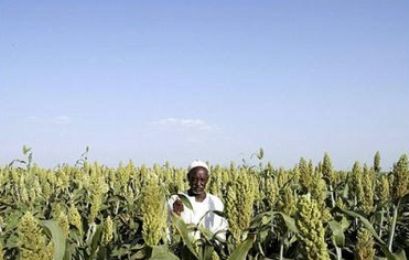Cereal production in Sudan declined by 46 percent: FAO
March 21, 2024 (KHARTOUM) – The national cereal production in 2023 is estimated at about 4.1 million tonnes, which is 46 percent below the output obtained in the previous year, the Food and Agricultural Organization (FAO) said in a crop and food supply assessment report.
An assessment for the report was conducted Between 2 and 17 January 2024, following a request by the Ministry of Agriculture and Forestry, the Food and Agriculture Organization of the United Nations, in close cooperation with the Food Security Technical Secretariat (FSTS) and the State Ministries of Agriculture.
The aim was to estimate the 2023 crop production and assess the food supply situation throughout the 18 states of the country.
The FAO Crop and Food Supply Assessment Mission (CFSAM) special report also stated that cereal production fell 40 percent below that of the previous five years.
According to the report released on March 19, Sorghum production in 2023 is estimated at about 3 million tonnes, 42 percent lower than in 2022 and 34 percent below the average. Millet output is estimated at about 683 500 tonnes, 64 percent lower than the output obtained in 2022 and 60 percent below the average.
On the other hand, however, production of wheat, for harvesting in March 2024, is forecast at about 377 900 tonnes, about 20 percent lower than the previous year and 46 percent below the average.
The significant decrease in total cereal production in 2023 was mainly due to the impact of the ongoing conflict on agricultural operations through insecurity as well as the limited availability and high prices of agricultural inputs, it highlighted.
It said high yields were affected by an erratic spatial and temporal distribution of seasonal rains, with prolonged dry spells in southeastern key-producing areas.
The high prices of agricultural inputs, caused by a limited availability due to conflict-related reduced imports and disrupted internal trade flows, led to soaring costs of production, according to the crop and food supply assessment report.
Although the number of vaccinated animals declined in 2023, animal body conditions and health were generally good, with no major disease outbreaks.
On a positive note, it said pasture and water availability was generally adequate at the time of the assessment, but it is unlikely that it may last until the start of the next rainy season in June 2024 due to insufficient rains. In some areas, the conflict limited movements of herds and constrained access to grazing resources.
The depreciation of the Sudanese pound, it noted, continued in 2023 due to the high demand of foreign currency to import essential goods no longer produced in the country following damages caused by the conflict to the industrial sector.
Prices of cereals surged in 2023 due to conflict-related trade disruptions, insufficient supply of grains and continuous depreciation of the national currency.
In December 2023, prices were up to twice their year-earlier levels, it further noted.
Also, the annual average inflation rate surged from about 140 percent in 2022 to almost 260 percent in 2023, constraining households’ purchasing power.
The special report called for immediate responses to the needs of the population most affected by acute food insecurity as well as to support the recovery of the agriculture sector, increasing food production and farmers’ incomes, and enhancing efficiency along the value chain to reduce production costs.
(ST)

